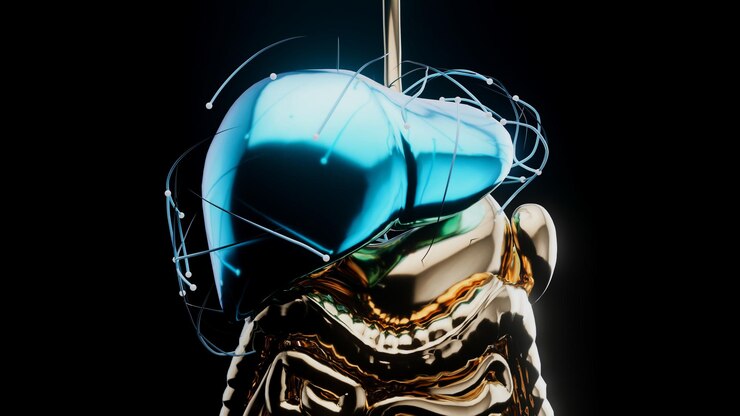Many people have fatty liver and don’t even know it. When someone says, “fatty liver”, most people don’t know what that means — including the person saying it! To my understanding, it means everything: fatty acids, like triglycerides, phosphatidylcholine, cholesterol esters, bilirubin, dead red blood cell remnants, iron waste and water! In other words, it means lots of junk is building up in the liver! But the biggest junk is probably triglycerides filled with toxins, which is the main source of fat storage and fat accumulation — hence the term, fatty liver.
Anyone who has fatty liver needs to look at their ferritin. My ferritin level was once over 280.
Yes, I have had fatty liver!
I have had fatty liver since fatty liver was not even in style — back in the 1980’s when I was 10 years old! I was blood poisoned (I believe) by painful injections in the buttocks, to supposedly manage my asthma condition!
Ferritin affects liver health:
To be clear, ferritin protein is where the body first stores excess iron. Do you know how much ions of iron one single ferritin complex carries? Up to 4500! So if your ferritin level is 50, multiply that by 4500 irons!
Now if your ferritin is 280, multiply that by 4500 iron ions!
Do you know what fatty liver is?: so much ferritin, that it turned into hemosiderin! Hemosiderin is the antarctic of iron waste. It is a graveyard of iron and dead lysosomes stuck in the south pole — actually, I meant, liver! In other words, when the body can no longer store excess iron in the ferritin complexes, it is forced to store it in this second option: hemosiderin. This hemosiderin storage system is hard on the body, especially the liver. And, it is hard to get rid of excess iron once it’s stored as hemosiderin.
Don’t get me wrong: low ferritin can also be distressing: it means the spleen is not recycling iron properly! But that can be simply resolved by consuming copper or wholefood vitamin C!
Does anyone know how to get out of the antarctic?
Enzymes affect liver health:
When doctors talk about liver enzymes, they are not only talking about the familiar AsT and ALt — they are also talking about such hardly ever tested enzyme(s) as GGT [Gamma-glutamyl transferase]. Actually, most doctors probably don’t even remember what GGT is! Often high when there is toxins in the blood such as from medication or alcohol or when there is hepatitis, cirrhosis, pancreatic obstruction or bile flow obstruction, GGT insures delivery of amino acids that make the powerful antioxidant glutathione. These amino acids include: glutamate, cysteine (cystine) and glycine.
Protein affects liver health:
What we also need to talk about is not only the liver enzymes, but also, the proteins produced by the liver. They also tell a lot by their too high or too low levels — such proteins as serum albumin and globulins! Abnormal numbers of these proteins may signal🚦 some type of dehydration, or worse, liver dysfunction. Chronic liver disease is characterized by a fall in serum albumin concentration and a rise in serum globulins.
Gallbladder health is affected by liver health:
Another thing needs mentioning is not only the liver — that very large organ, but its pipeline: the gallbladder!
Many people have liver issues because the gallbladder is stuck with sludge or gallstones! Can you imagine your kitchen sink pipe clogged with chewing gum? Many people nowadays are listening to their doctors recommend having their gallbladders removed, as if gallbladder surgery was an ice-cream treat! Removing your gallbladder is the same thing as removing the sac that holds bile that is needed to digests fats.
That’s why I also look at bilirubin levels — specifically direct bilirubin, to make sure gallbladder is opened (3mm) and working properly. Too high bilirubin (a “compound” from heme, produced in the liver) means gallbladder is clogged! That’s why I use chanca piedra or bhumi amla to unclog the gall-pipe!
The history of fatty liver:
There was once a time when doctors would only entertain the term fatty liver if someone consumed alcohol. If you did not fit that category and still complained that you may have fatty liver, then these doctors would say, “Oh, you don’t know what you’re talking about! Stop complaining and enjoy life!” It was only after repeated and vehement complaints that science then began to realize there is fatty liver beyond alcohol fatty liver disease. They investigated, and labeled this new awareness (or acknowledgement): nonalcoholic fatty liver disease or NAFLD.
As time went by, NAFLD untreated became a more severe form of liver disease progression known as nonalcoholic steatohepatitis or NASH. As more time went by, NASH became obsolete, and led to a new term: metabolic dysfunction -associated steatohepatitis or MASH (from the less severe metabolic dysfunction-associated steatotic liver disease (MASLD)) in 2023 because, “nonalcoholic” and “fatty” seemed too stigmatizing and trivializing the disease, thought those wise minds. In other words, science still could not make up its mind about what fatty liver disease is!
And to complicate things even more, we have another term — i.e., liver disease caused from environmental toxins: toxicant-associated fatty liver disease (TAFLD), which can then lead to the more severe: toxicant-associated steatohepatitis (TASH).
Now, to end all the confusion, all we probably need to know is that MASLD and the severe form, MASH, are the newest terms that aim to encompass all forms of liver disease.
Liver disease progression:
To simplify things for the purpose of this article, there are three grades of fatty liver: mild, moderate and severe, with up to 1/3, 2/3 and 3/3 of fat deposit and fat accumulation, respectively. And there are progressive stages to fatty liver:
– Simple fatty liver (fat only)
– Steatohepatitis (fat accompanied with inflammation)
– Fibrosis (chronic inflammation)
– Cirrhosis (widespread scarring that greatly impairs liver function).
Much of this is fixable, yes. But severe fatty liver disease with cirrhosis is going to need a lot of work. Be optimistic, but do not be fooled if someone tells you, “the liver is the only organ that regenerates itself and if you cut off a part of it, it will simply grow back!” Welcome them to the real world 🌎 — the liver won’t do anything good unless you work hard enough to fix it!
Reverse fatty liver disease:
Luckily, nature has provided ways to accelerate reversing fatty liver disease. It is called herbs! I have studied for years and tried to find the best answers to what the best things to reverse fatty liver disease are. And I think I’ve found them.
It is not milk thistle. Milk thistle is good for liver that is already healthy. It is not burdock root either — though that can be helpful. It is not artichoke extract or swedish bitters either. Yet those can be helpful.
The herbs that I like to focus on at reversing fatty liver are from ayurveda: kutki, Bhumi amla and amla!
Kutki is a bitter herb that works like a mechanic, going into liver cells, and bringing them back to life. Bhumi amla is like a drainage plunger, unclogging gunk out of the gallbladder. Amla a.k.a Indian gooseberry is a powerful antioxidant and anti-inflammatory that may help stimulate the regeneration of liver cells, and facilitate in the repair of damaged tissue.
But there are other things necessary to accelerate reversing fatty liver disease. They are: choline and IP6-inosotol.
Choline helps remove fat from the liver, while IP6-inositol helps remove excess iron from the liver. Excess iron is a major cause of fatty liver disease and liver inflammation! Phlebotomy through blood donation can also relieve the body of excess iron in the blood.
And of course, eat healthily and properly:
If you have fatty liver disease, junk food and excess sweets are a no no. Excess alcohol is a no no. Eating excess amounts of animal meat is a no no. Animal protein may raise insulin levels to intolerable levels. Excess dairy and eggs are a no no. And foods high in oxalates is a no no. I have compiled a list of the safest, most nutritious foods! If you have fatty liver, you need to load up on B vitamins, as with the choline previously mentioned, but also particularly vitamins B2 (riboflavin) and B5 (pantothenic acid) — found in organic bee pollen — to accelerate the healing process of a damaged liver. Other nutrients include magnesium, copper and phosphorus.
Sugar, sugar substitutes, and sugar alcohol may also contribute to fatty liver disease:
When someone says something like too much sugar causes fatty liver, I think one detail in that means, too much high fructus corn syrup and the nasty Maltodextrin that usually comes with it, contributes to fatty liver! So does aspartame. If you like sweet things, look for pure organic honey, coconut sugar, palm sugar, molasses, or even plain old cane sugar. These other sugars, such as sugar alcohols and artificial sweeteners are destroying peoples’ livers! Monk fruit (sugar) is up for debate, since it is usually combined with other sugar alcohols to make it taste like sugar.
So, what should you do?:
– If possible, get an ultrasound for the liver.
– Get a blood test checking for:
– Ferritin: should be less than 75
– Ast and ALt should be less than 20
– GGT: should be less than 30
– Serum albumin: should be between 4.1 and 4.8
– Globulin: should be between 2.2 and 2.8
– Direct bilirubin: should be less than 0.3
Herbs:
– Kutki
– Bhumi amla
– Amla
Supplements:
– Choline
– IP6- Inositol
Procedure:
– Phlebotomy (blood donation)
Foods
Eat healthy, limiting alcohol, sweets and excess animal protein. Pay special attention to food containing vitamins B2 and B5. Also magnesium, copper and phosphorus rich food are beneficial to help heal a fatty liver.


